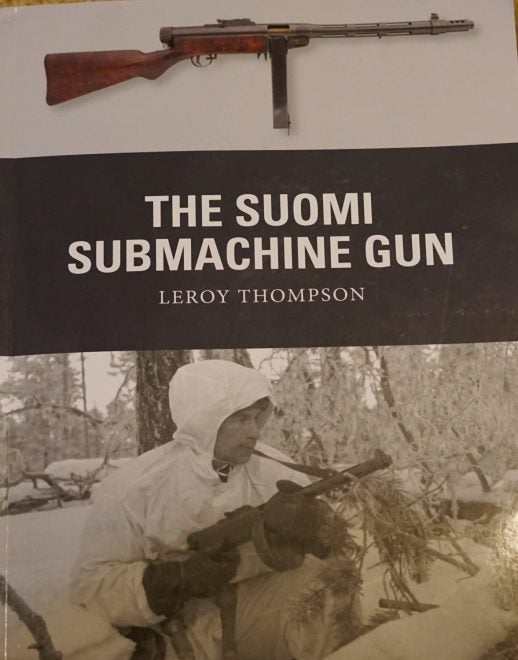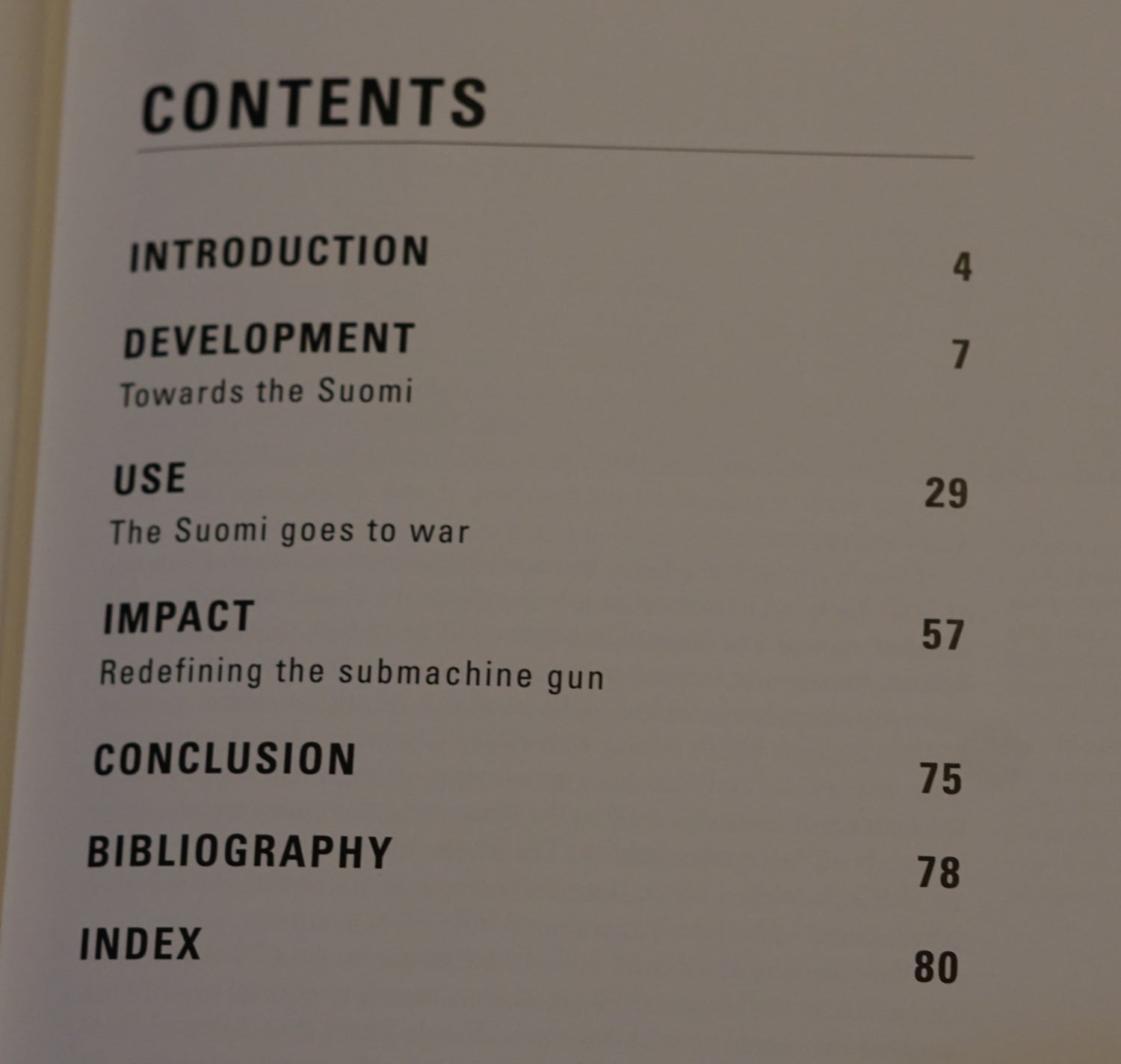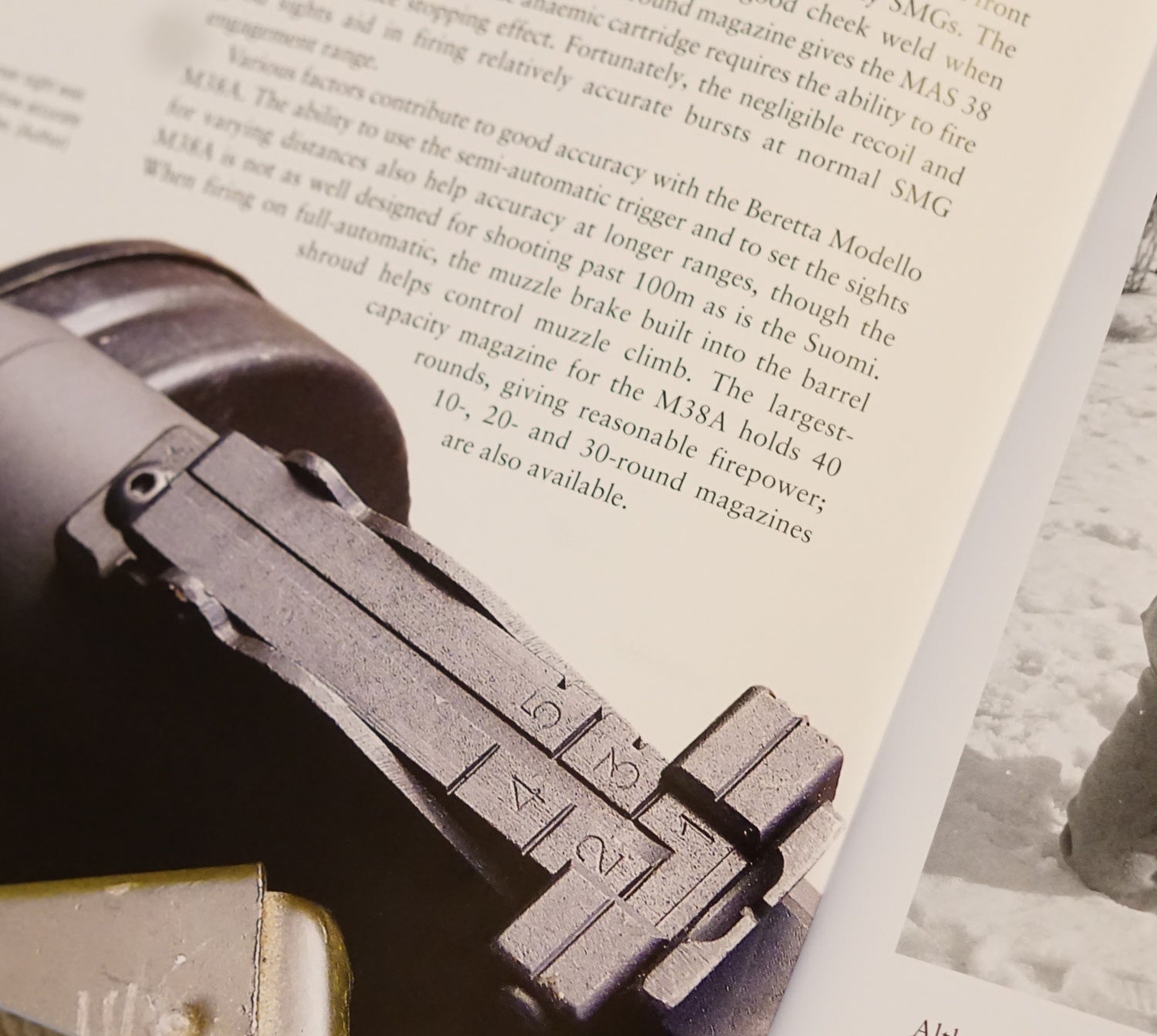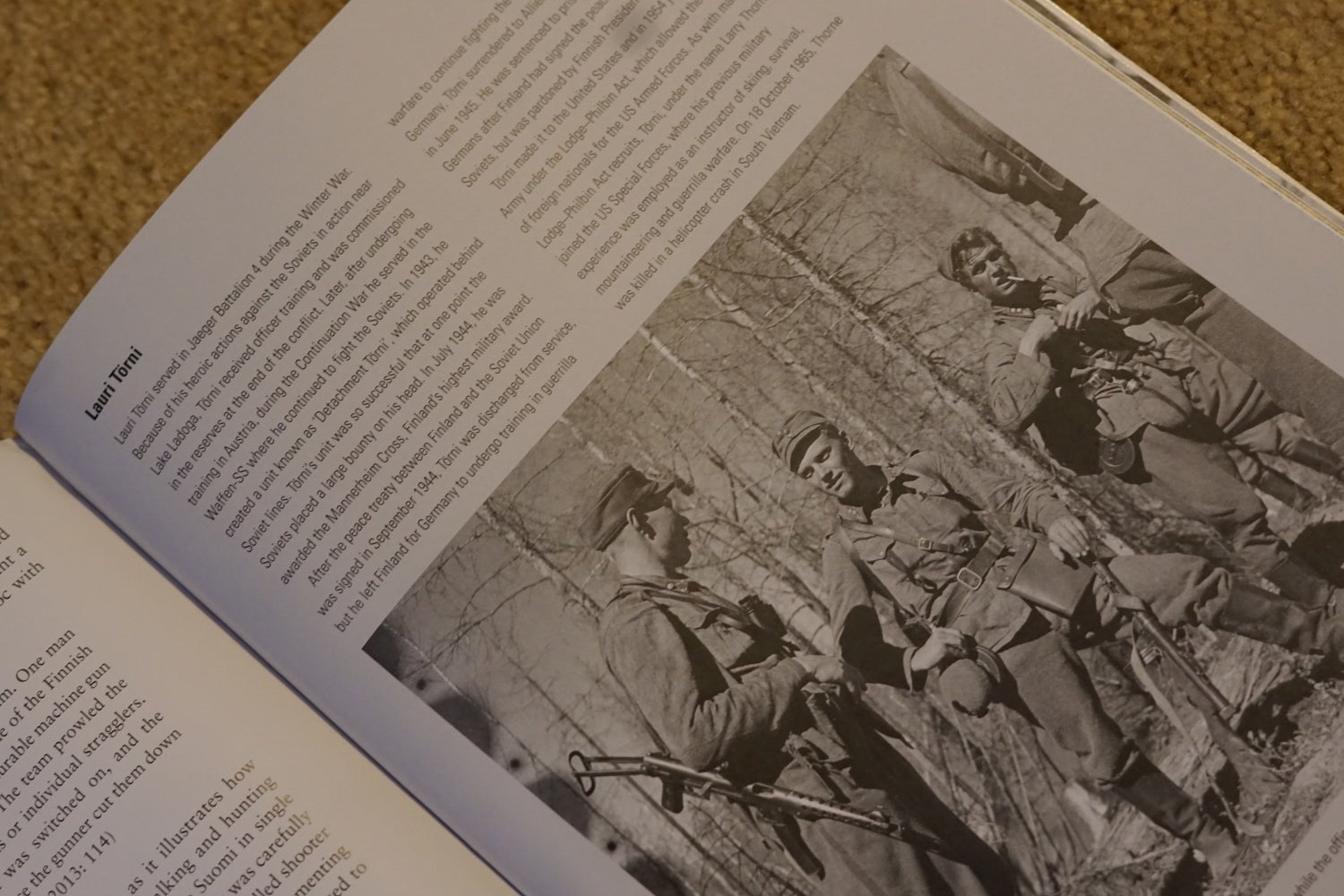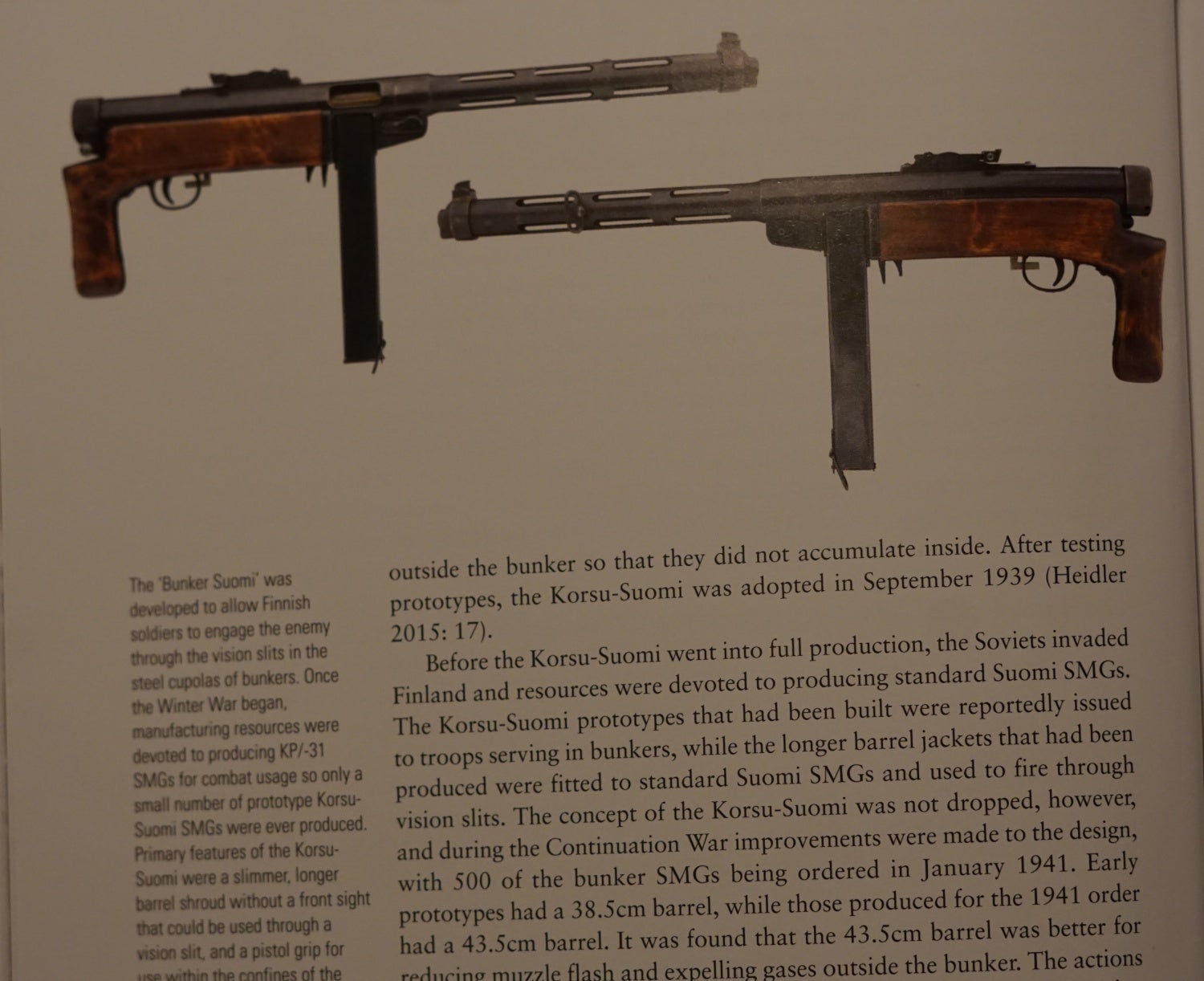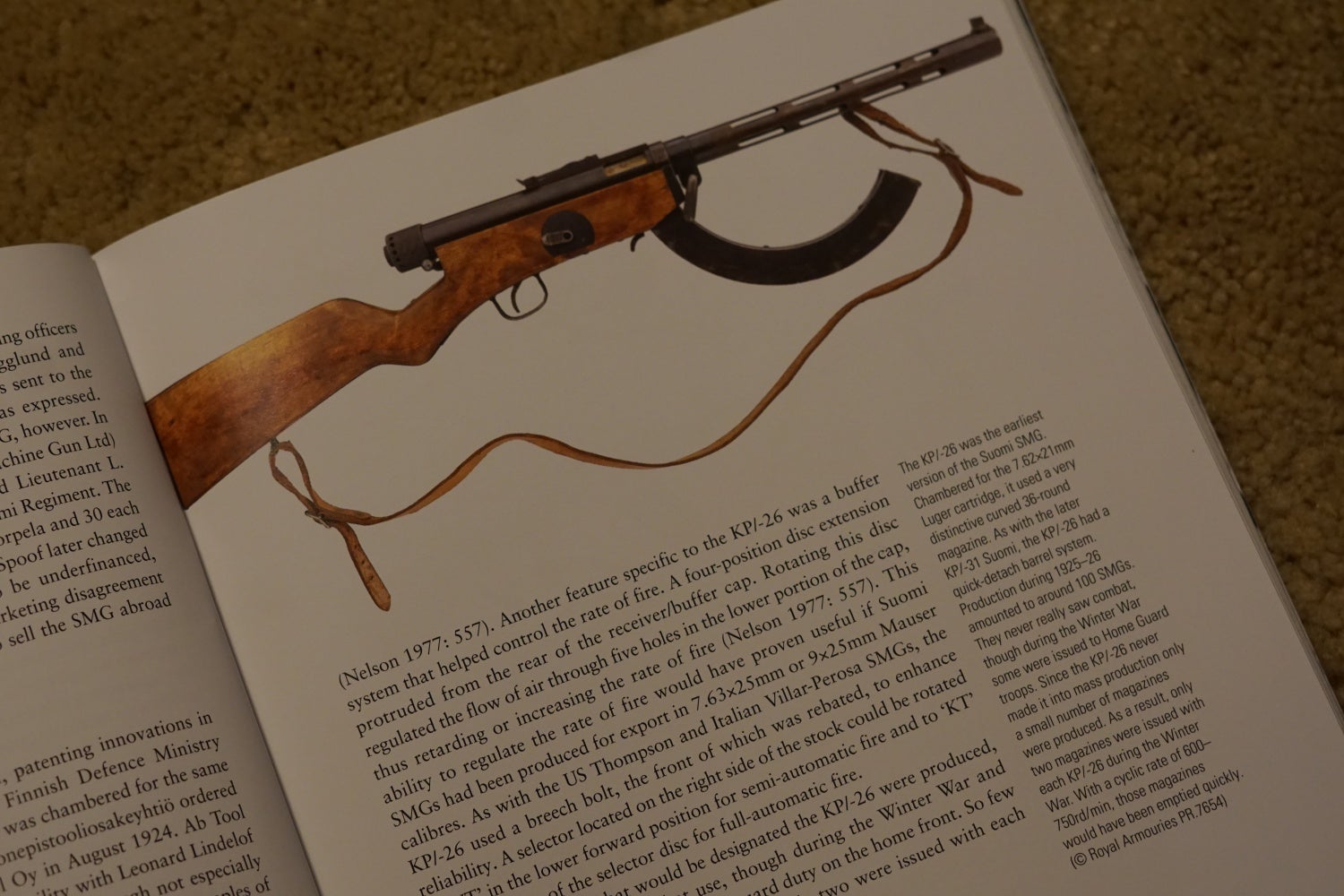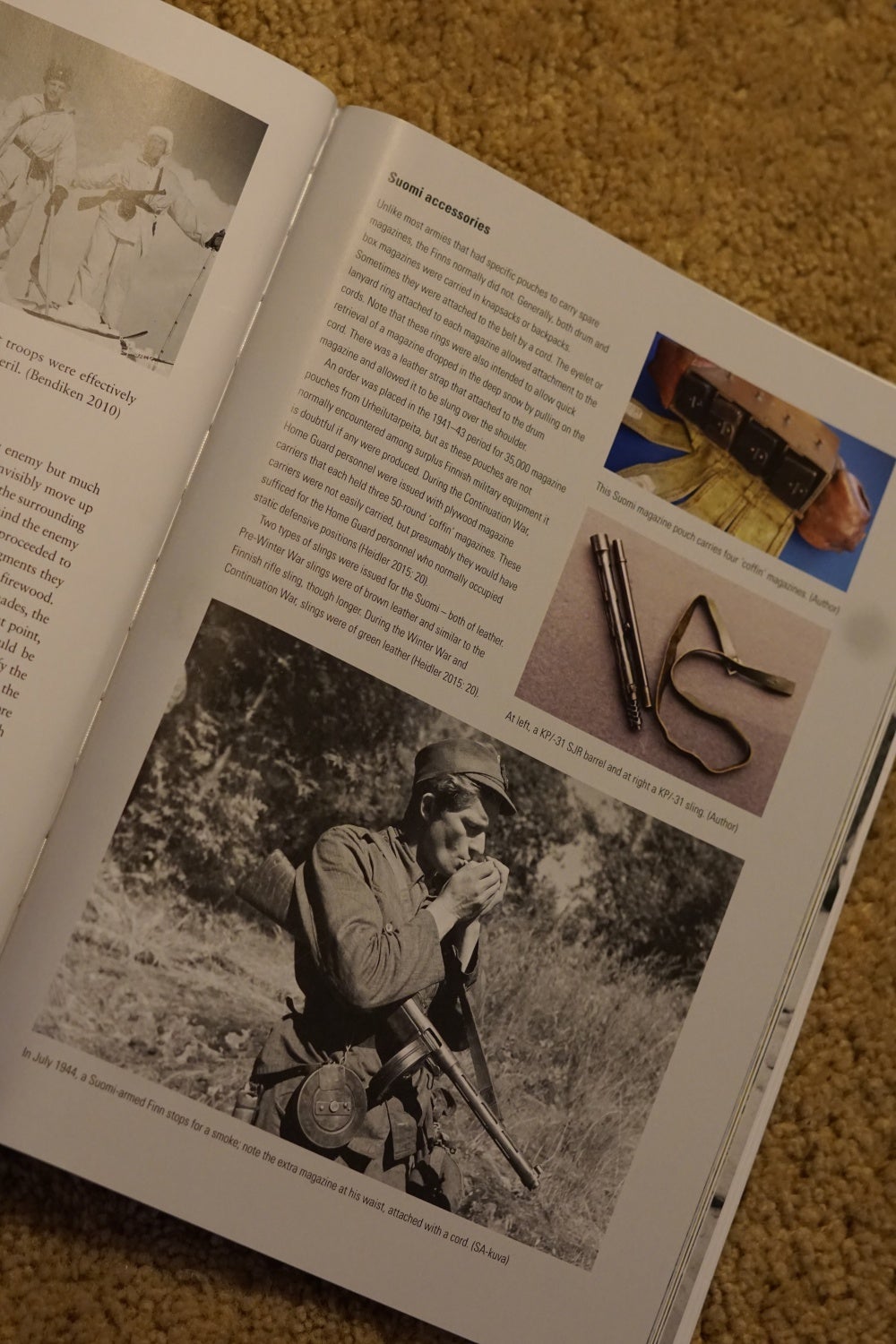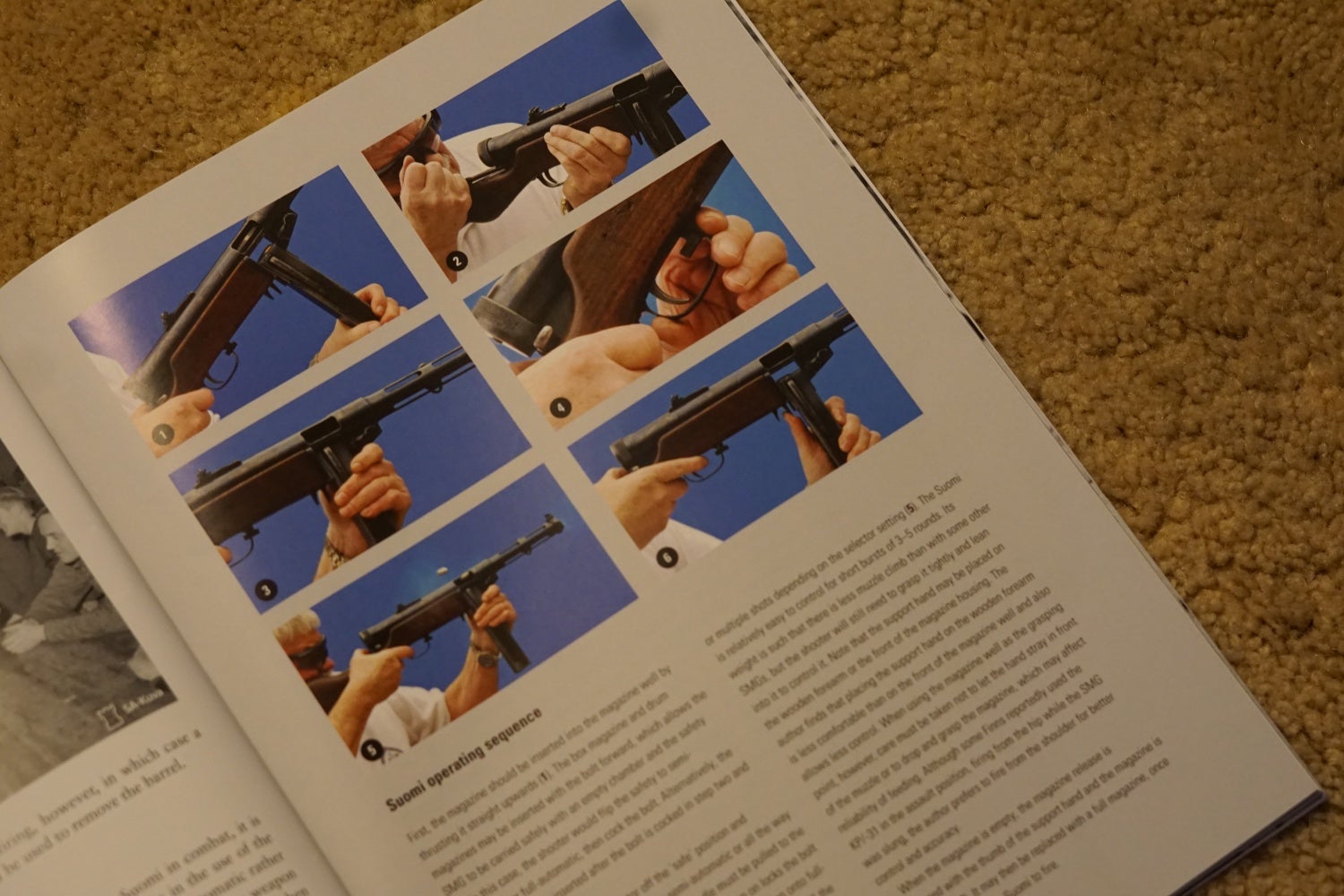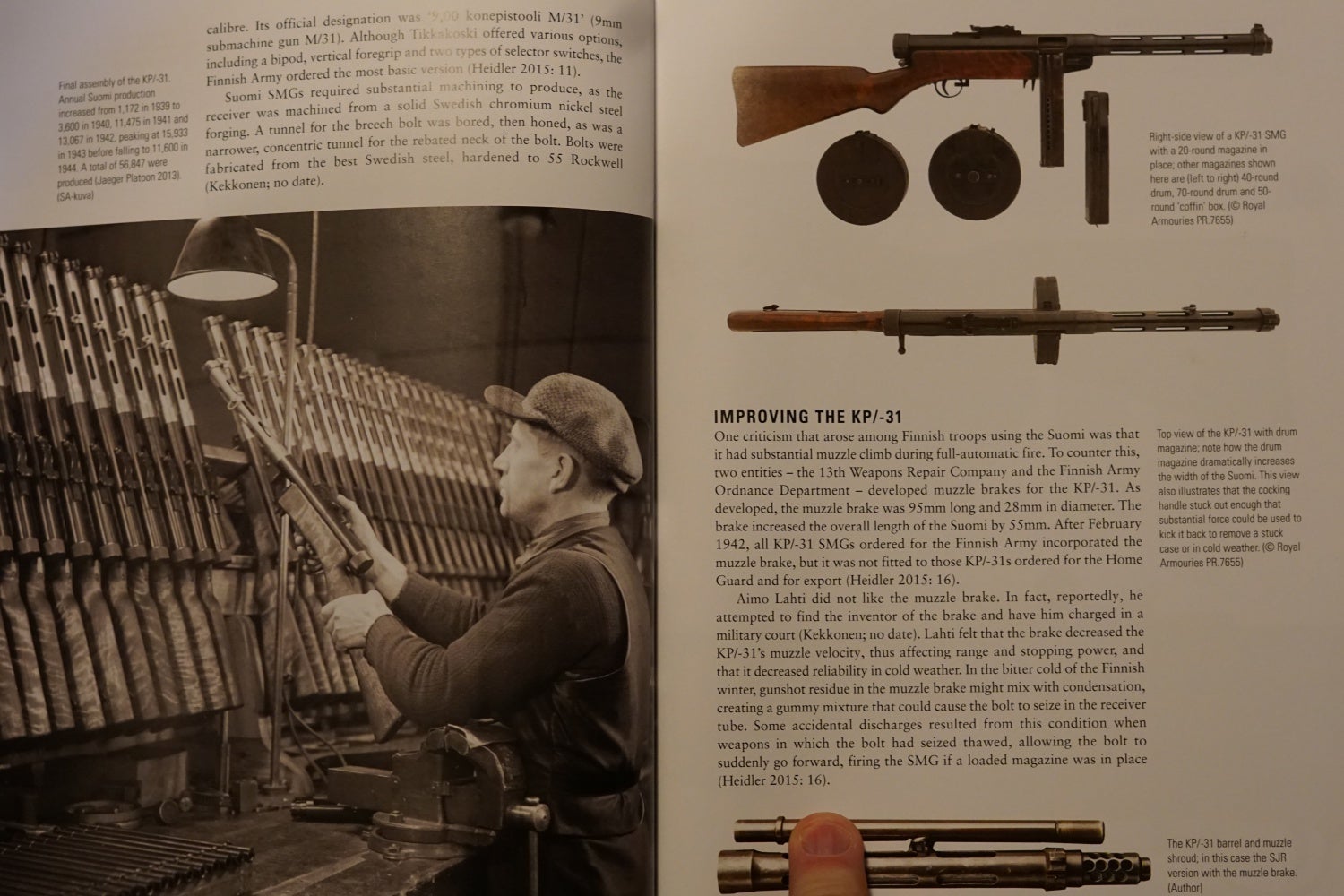Osprey Publishing “Weapon” series is an excellent primer for those who want a book on a particular weapon system, but don’t want an overly in-depth version more appropriate for research purposes. The books aren’t intended to make you an expert on any particular weapon but do greatly improve your knowledge of a particular one when it comes to history, design, usage, and current application. This sort of approach to small arms literature isn’t new, Ballentine Books having pioneered it in the 1960s and 70s. Both publishing companies got their name for starting out with books on individual battles, then moving on to weapons. However with Osprey, the company is really getting into some depth with each particular weapon, and hopefully will expand it in the future.
In this edition by Leroy Thompson, the Finnish Suomi Submachine Gun is covered in 77 pages of text, photographs, design layouts, and artist renditions of battle scenes. Thompson covers the operational requirements for the Suomi KP/-31 in the early 1920s and 30s beginning with the KP/-26 from designer Aimo Lahti. Initially, the submachine was quite costly to produce, even incorporating a sort of receiver tube cap that could be rotated to change the rate of fire. Thompson discusses the various design variations that existed, to include short versions, cheaper versions, a port firing version with a pistol grip and stock omitted, and even a flame thrower version.
Through studying the Suomi we learn how the submachine gun was central to the Finnish tactics of maneuver warfare in the snow, quickly encircling a Soviet element, then attacking them in sections, sking to within 50-100 meters, unloading several Suomi drums, then egressing to attack again. Being able to carry this much firepower in a small package compared to an LMG allowed the Finns to inflict heavy casualties on the Soviets who were armed with bolt action Mosin Nagants and water cooled machine guns that would have taken too long to employ against such attacks. Coupled with the Finn’s superb grasp of fighting in winter warfare, the Soviets suffered a large amount of casualties compared to what was inflicted against the Finns. Fighting in the snow and the cold brings a completely different skill set than fighting in moderate temperatures. Simple tasks become impossible and hard tasks can almost not be achieved due to the severe cold.
Thompson goes to great lengths throughout the book to point out the dramatic difference between pre and during Second World War submachine gun employment and what we are used to today. Even comparing the Suomi to similar open bolt, wood stock, select-fire submachine guns of its era there was a huge difference in the way that the Finns treated and employed their submachine guns. From the uncommon accuracy, the ability to quickly change barrels, and the employment of the submachine as a precision weapon, how the Suomi was utilized is very different than how U.S. forces used the Thompson, or the Italians the Beretta M38A. In fact, because the Soviets learned through so many casualties from the dreaded Suomi, they took the concept of a cheaply manufactured submachine gun as the concept basis for the PPSh-41 submachine, manufactured with similar cheaper processes and arming entire platoons of soldiers. The irony here is that with the PPs-43, the Finns copied it as the KP m/44 with the ability to use 71 round drum magazines.
I will say that I found sources quoted from the internet as a first and somewhat surprising when it comes to actually reading books. Forgotten Weapons is even quoted as an example of the flame-thrower Suomi variant. In fact, of 34 entries listed in the bibliography, 17 are online entries, either magazines online, forums, or even blogs like Forgotten Weapons and Weapons Man. At first glance this would appear to be badly researched, but upon second thought, there really aren’t any books wholly dedicated to the Suomi submachine in the English language. So I can’t really blame the author for citing from the internet when there isn’t anything in physical print. One point I will dig Osprey on is the editing style. Whomever edited the book must have forgot to change Thompson’s third person to first person, or vice versa. He started off in the third person as “the author” when dicussing his personal experiences with the Suomi, then switches to the first person as “I” later on. It doesn’t change the material but is a little bit odd as a reader. In addition he talks about Soviet casualties in a somewhat lackadaisical manner more conducive to a forum or blog than printed material. It isn’t all the time but it comes through occasionally.
They say that the internet is a mile wide but only an inch deep. When it comes to studying small arms, I can certainly agree with this statement. Although there are numerous English language information outlets online that cover the Suomi, many even mentioned in Thompson’s book, none of them will come close to the overall depth and coverage that Thompson brings to bear. In fact, I would venture to say that the only way to have prior knowledge of the Suomi is if one was a student of the Finnish Winter and Continuation wars and even then, this book would still run laps around that knowledge when it comes to the submachine gun. Another important point I would like to mention is that even though this is just an Osprey Weapon series publication, it appears that this is only the second English language book to be published just about the Suomi. Michael Heidler published a dual German/English book on the Suomi that is much more exhaustive than the Osprey if readers are interested in a very in-depth publication on the submachine gun.
You can purchase this book through Amazon for $20.00 paperback, or $8.79 for Kindle.
 Your Privacy Choices
Your Privacy Choices
